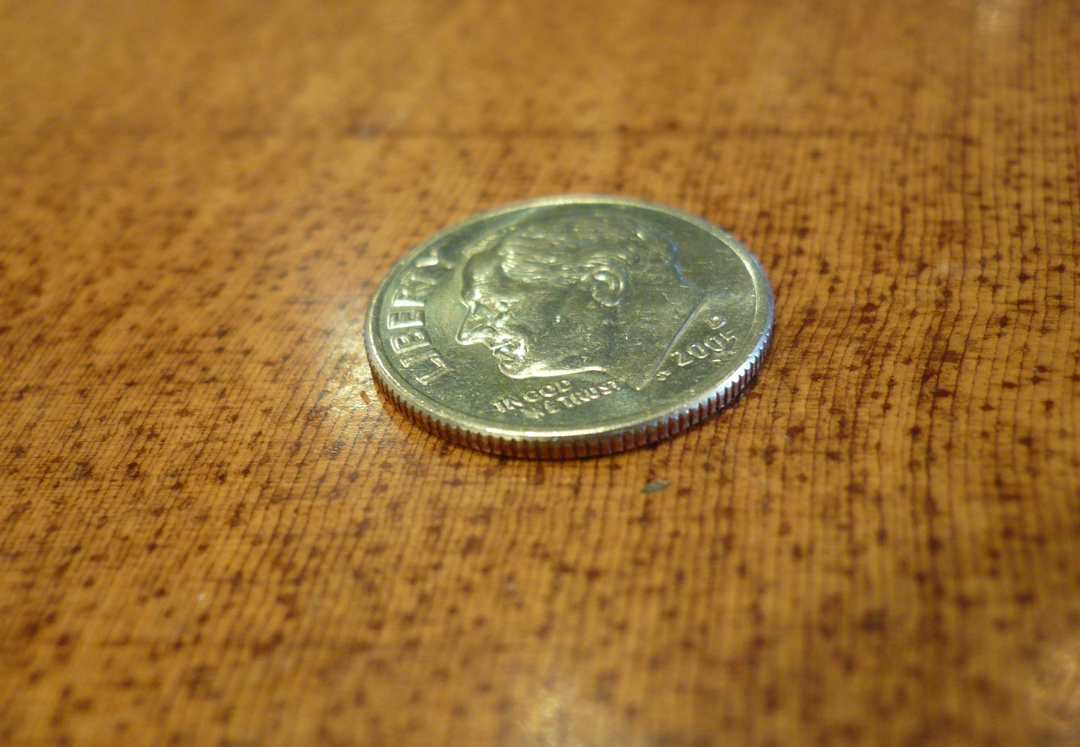
Photo Courtesy & Copyright
Mark Larese-Casanova, Photographer
 Bristlecone Pine Grain
Bristlecone Pine GrainCompared to a Dime
Photo Courtesy & Copyright
Mark Larese-Casanova, Photographer
Hi, this is Mark Larese-Casanova from the Utah Master Naturalist Program at Utah State University Extension.
Utah’s cold mountaintops, like its hottest deserts, are rather inhospitable to most plants. Although more precipitation falls at higher elevations, colder temperatures prevent much of the water from being used by plants, since most of it falls as snow in winter. High winds also inhibit growth and can contribute to frost or wind damage to plants. Any plants that grow here must be especially hardy.
The Great Basin bristlecone pine is a grand sentinel of our rocky, high mountain ridges. Its shorter needles are grouped in bundles of five, and grow densely at the end of the branches, creating a ‘bottlebrush’ or ‘foxtail’. However, the growth of the wood is the most interesting aspect of the Great Basin bristlecone pine. For a tree, each ring represents one year of growth. Because of the colder temperatures and shorter growing season, each growth ring of a bristlecone pine is particularly small, usually around 1/32th of an inch. The tight growth rings result in especially dense, resinous wood that is resistant to decay and insects.
At higher elevations, a bristlecone pine’s growth form becomes more twisted and contorted by the wind. Over time, much of the tree may die, and the living portion may simply be a strip of bark up the trunk and just a few branches.
These adaptations allow the Great Basin bristlecone pine to live an exceptionally long life despite such harsh conditions. It is common for a bristlecone pine to live for thousands of years, and the oldest recorded specimen was aged at approximately 5,000 years old. That means it germinated from seed a few hundred years before the first Egyptian pyramid was even built! Bristlecone pines can even remain standing for thousands of years after they die. Growth ring patterns can be compared between living and dead bristlecone pines to reveal a chronology of our climate for the past seven, eight, maybe ten thousand years!
To see bristlecone pines in Utah, hike the Bristlecone Pine Trail in Bryce Canyon National Park or the Ramparts Trail at Cedar Breaks National Monument. Be sure to take only photos, and not wood or cones. Bristlecone pines will be around a lot longer than we will, and they could use all the help they can get.
For Wild About Utah, I’m Mark Larese-Casanova.
Credits:
Images: Courtesy & Copyright Mark Larese-Casanova
Text: Mark Larese-Casanova, Utah Master Naturalist Program at Utah State University Extension.
Additional Reading:
Lanner, R.M. 2007. The Bristlecone Book: A Natural History of the World’s Oldest Trees. Mountain Press Publishing Company.
Cohen, M. P. 1998. A Garden Of Bristlecones: Tales Of Change In The Great Basin. University of Nevada Press.
